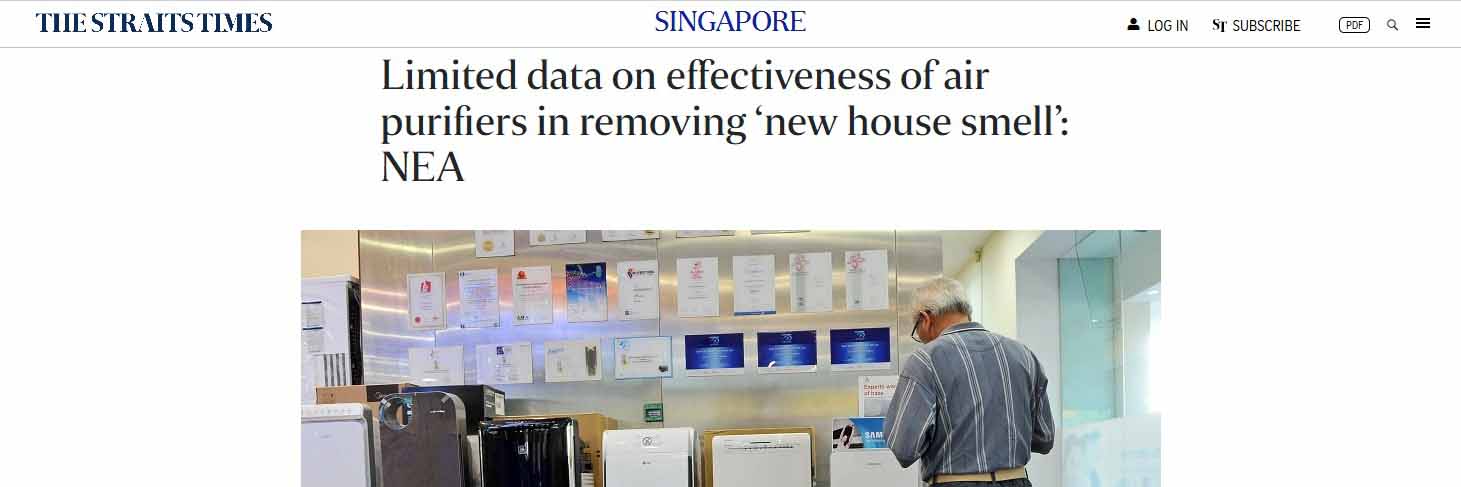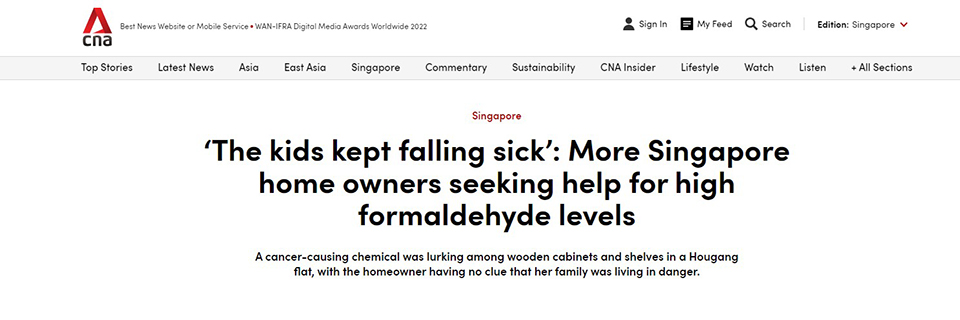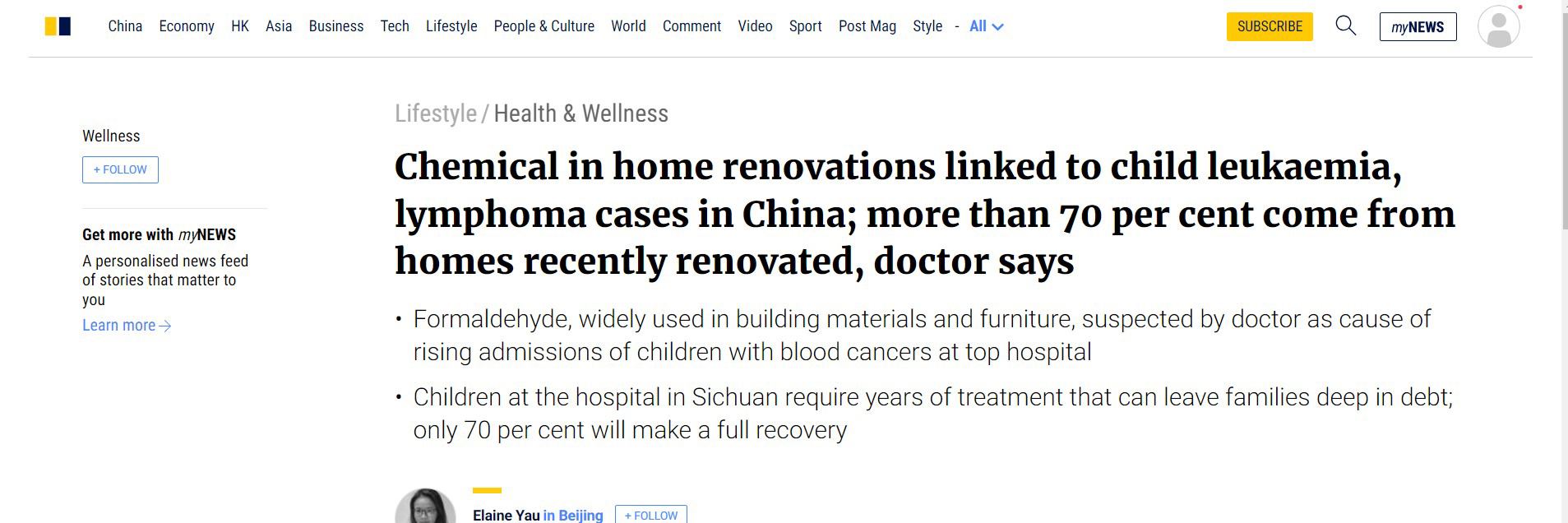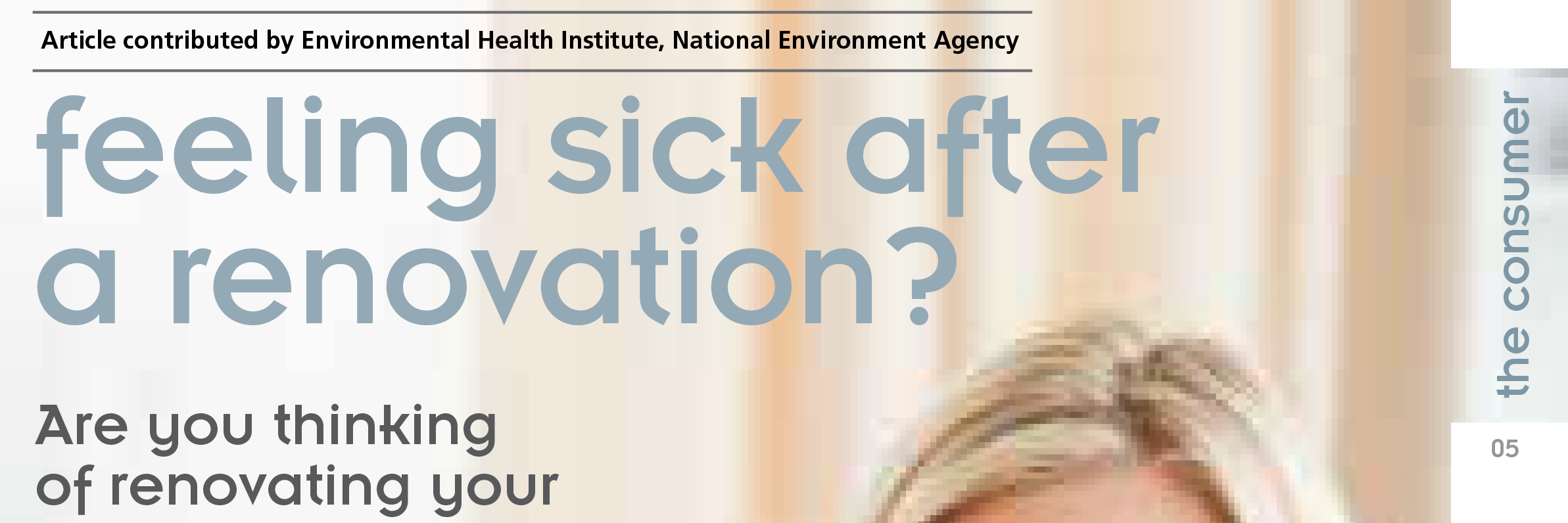Healthier Home
Safer home for you and your loved ones
Safer homes with healthier indoor air quality
The holistic meaning of what it means to live healthy
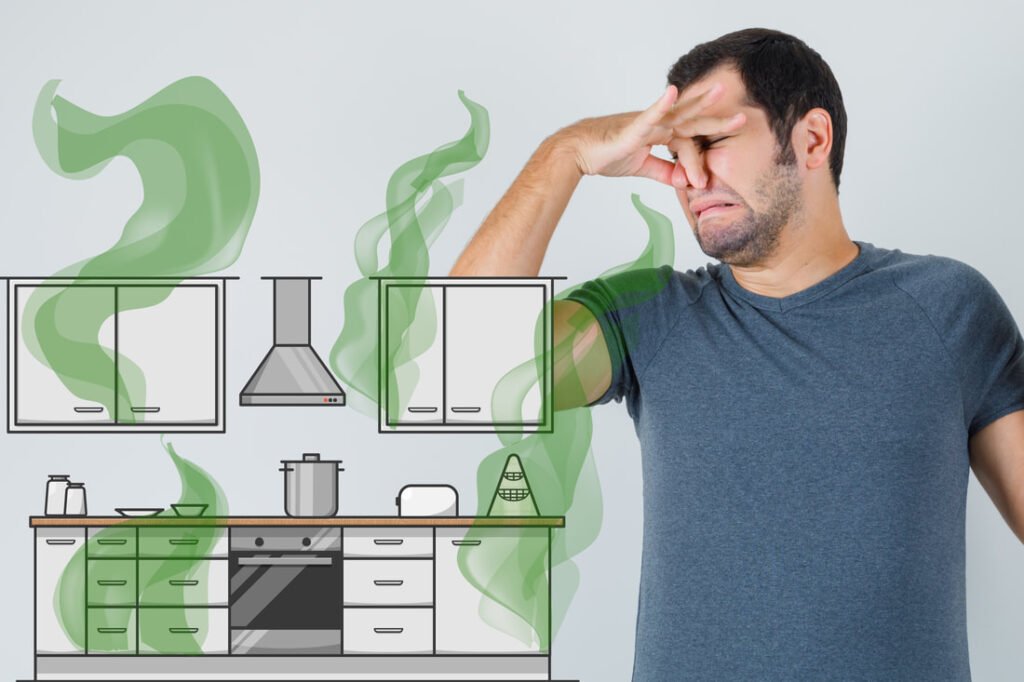
Moving into your newly renovated home can be nerve-wrecking, exhausting, and overwhelming.
What makes it worse? The smell of the brand new home that packs a strong pickle-like odour which is particularly stronger when the built-in furniture (i.e kitchen and wardrobe) cabinets are open.
Your family may start to complain of recurring eyes and throat irritation before you realise it may be caused by an excessive concentration of volatile organic compounds (VOCs) in your house that affecting your indoor air quality.
Off-gassing, the need of the hour
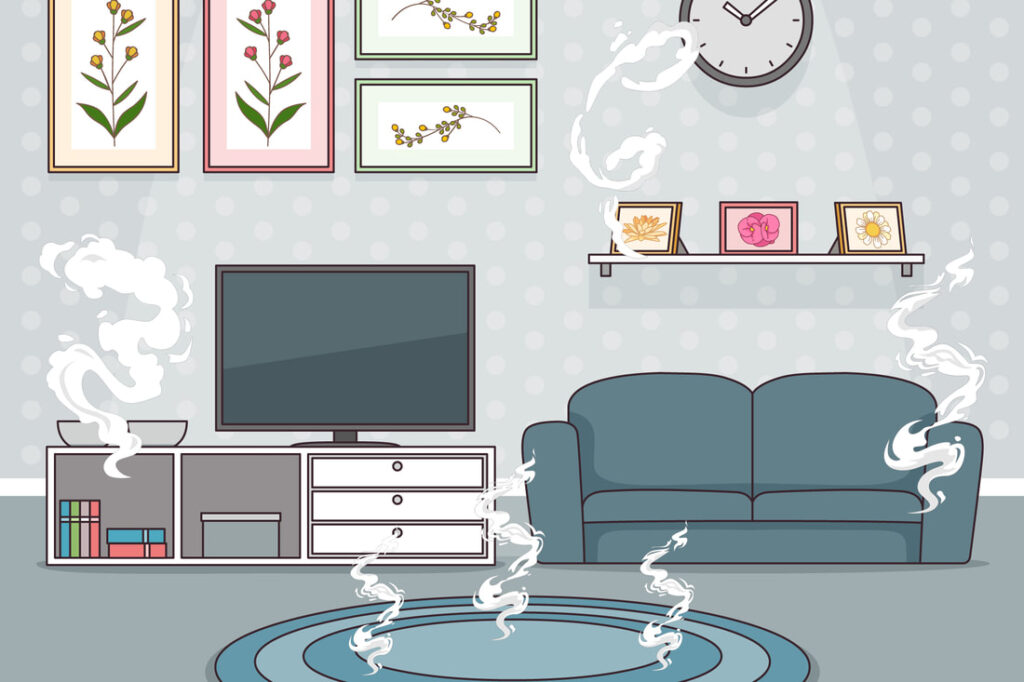
The newly renovated house furnishing and finishes may release harmful chemical (VOCs) into the air for years through a process called off-gassing that affecting the indoor air quality.
Potential sources of off-gassing ranges from construction materials to carpeting, built-in furniture, furniture, paint and number of household goods.
Formaldehyde in this case, slowly release and off gases without you noticing into the air and into your body system.
Formaldehyde: What is it?

Formaldehyde, a colourless and strong-smelling gas, is one of the many volatile organic compounds (VOCs) present in our home. It is found in products like glue, resin and varnish. Building materials, furniture and built-in furniture are the main sources of exposure to Formaldehyde in our home.
Formaldehyde has become a very important ingredient in the production of industrial resins including the adhesive that is used to bond engineered wood-based products (i.e. Plywood, Blockboard, MDF and Particle Board) but can be harmful in higher concentrations.
Will Formaldehyde affect your health?
Our lifestyles have placed us in positions prone to inhaling such toxic fumes. While many people take precaution by wearing masks to shutting ourselves at home on smoggy days, is staying at home really safe?
Formaldehyde is in the air we breathe but at very low levels. The real health issue is in long-term exposure to high levels of Formaldehyde indoors. Although the amount of toxic fumes released from any one source decreases over time, studies have shown that some building materials can emit Formaldehyde for months, sometimes years, at levels 10 times higher than the acceptable limit that decrease our indoor air quality.

Respiratory problems and allergies may develop especially in children and people with environmental sensitivities. Studies has shown that high levels of exposure to Formaldehyde may also increase the risk of developing cancer.
Studies from well-known organization
of Formaldehyde and how it affect us and the indoor air quality
ORGANISATION | WHAT THEY SAID | REFERENCES |
Listed Formaldehyde as “Human Carcinogen” | ||
Classified that Formaldehyde may cause some type of cancers | ||
Concluded exposure to Formaldehyde may cause cancer | ||
 | Concluded Formaldehyde have been linked to some types of cancer in humans | |
Classified Formaldehyde as carcinogenic to humans |
Articles on Formaldehyde related matters
What can you do to prevent or reduce high concentration of Formaldehyde emission?

There are a few ways to prevent or reduce Formaldehyde emission in our indoor air quality depending on whether you are planning to, or have already renovated your house.
Act at the source
Select building materials low in Formaldehyde at the initial stage to minimise Formaldehyde build up within our indoor air quality.
Control temperature and humidity
More Formaldehyde is emitted when the surrounding temperature is warm and humid. Therefore controlling the temperature and humidity of the house could help combat this problem.
Formaldehyde removal service
While there is no 100% guarantee of its effectiveness, this solution is for those who have already renovated their house. Depending on the areas affected, this service can cost from hundreds to thousands.
Ventilation
When possible, open all windows to ensure good air circulation in the room, relying on range hood, bathroom fan and air exchanger when needed.
Make health-conscious purchases
Prevention is better than cure. The best solution to battle against Formaldehyde in our indoor air quality is to choose certified low Formaldehyde products / materials, or look for Singapore Green Label certified products / materials.
This will help prevent you from facing more problems in regards to Formaldehyde at a later stage.

We create healthier homes
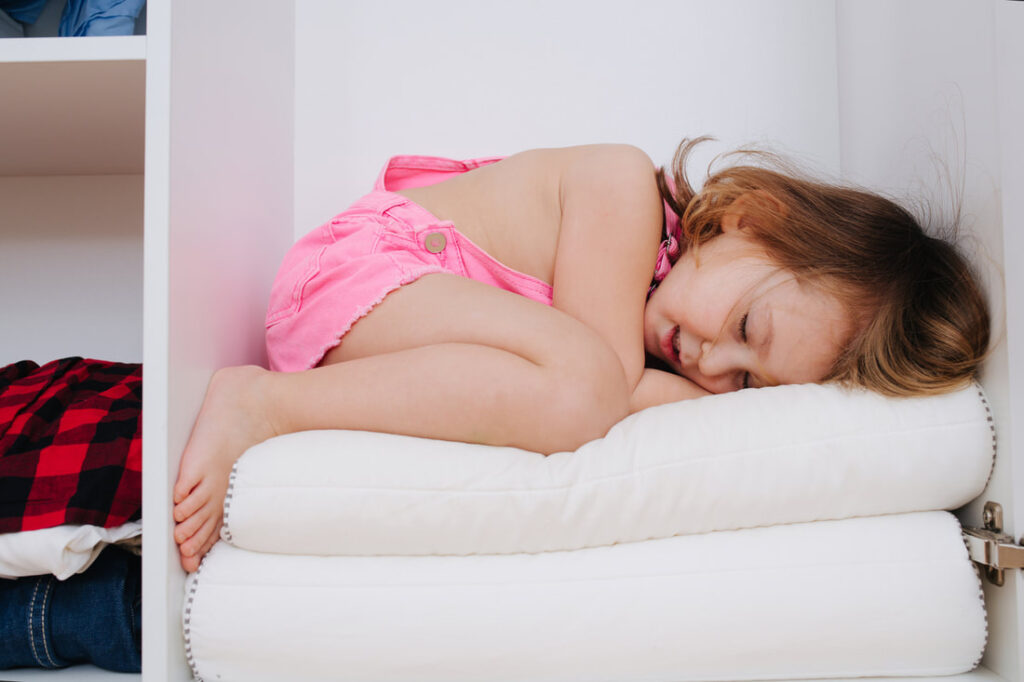
At E³.SPACE, we understand that the basic requirement for long lasting built-in furniture and good indoor air quality is closely linked to premium raw materials.
Therefore we provide the finest quality wood-based material (melamine boards) imported from EGGER. Besides reliability, these materials also provide a safe interior for you and your loved ones. We recognise the importance of indoor air quality, therefore our products are ultra low in Formaldehyde – providing you and your loved ones with a safer home.
E³.SPACE utilises materials from EGGER that comply with the highest Formaldehyde emission standard of F**** / ENF offering the lowest Formaldehyde emission currently in the market and is certified with Singapore Green Label. This ensure good indoor air quality for a healthier living.

JP F0,3 (F****) / ENF MR
Promises the lowest Formaldehyde
emission standard in the industry

EGGER International
Sustainable construction and healthier living with EGGER wood-based material
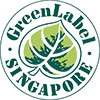
Singapore Green Label
Made from recycled material
041 - 108 -3395
Safe in any situation
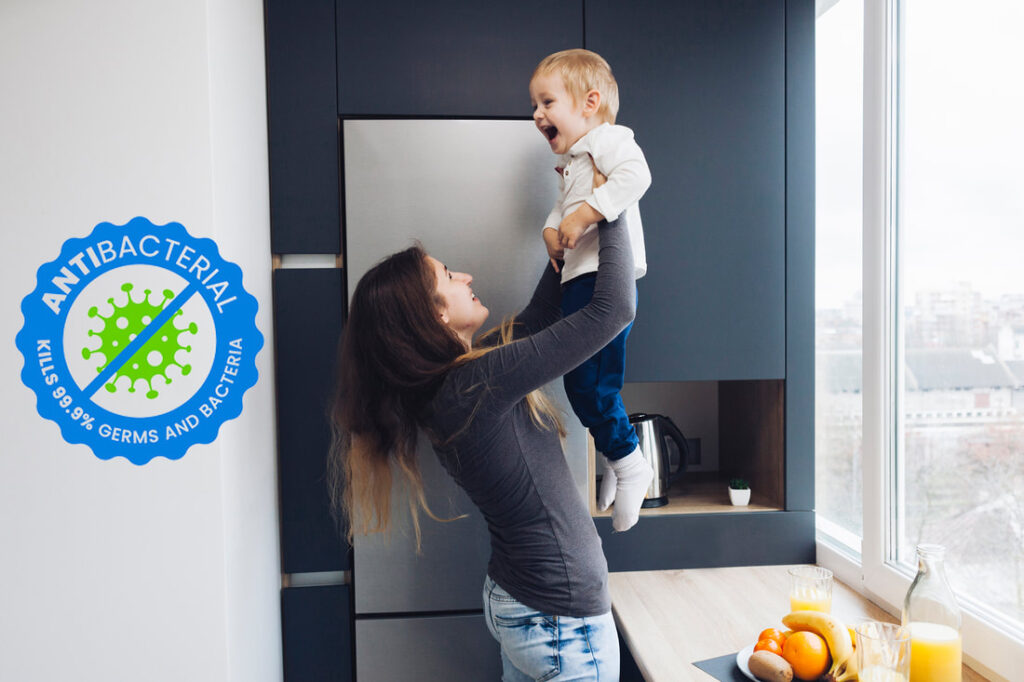
Besides providing a good indoor air quality environment and a healthier indoor living space, your safety is also our top priority. Areas such as kitchens, bathrooms and shared spaces are prone to bacterial growth, and bacteria can be transmitted from person to person or via objects and surfaces.
As such, special requirements are needed in the built-in furniture. Our imported EGGER materials come with antibacterial surface properties that eliminate 99.9% germ and bacterial, 24 hours after cleaned and sanitised. This offers an effective support for surface hygiene, thus providing a safe environment for you and your family.
Good things are meant to be shared
Thank you Mediacorp for featuring us

A special thank you to Mediacorp for featuring our showroom on the variety show mySPACE on the renovation tips “The Hidden Killer of House: Formaldehyde”.
Formaldehyde is a common found chemical in renovation materials, and is likely to cause long term harmful effect to one’s health. Find out how you can protect yourself by minimizing such harmful effect.

